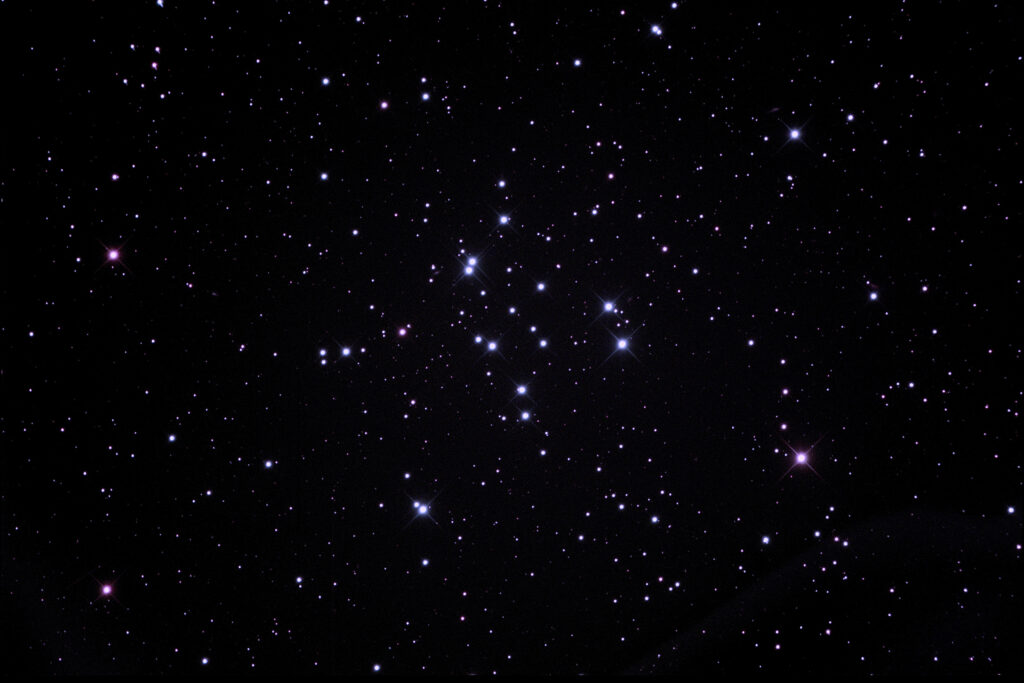M34 is an "open" star cluster in the constellation Perseus. At a distance of 1,500 light years, it spans 35 arcminutes of the sky which corresponds to 7 light years or the angular size of half of a full Moon.
It is visible with the unaided eye from dark locations, and is magnificent in binoculars. The cluster contains nearly 100 stars, including 19 white dwarfs and a number of double stars (the most prominent of which is h1123 in the upper center region of the cluster). White dwarfs are stars with an initial mass of up to 8 times the mass of our Sun (about 95% of all stars) that collapse when diminishing fuel is inadequate to produce fusion reactions sufficient to offset the inward and inexorable force of gravity. The inward collapse is abruptly halted by a force known as electron degeneracy (electrons resist occupying the same quantum state) if a star's final mass is below the "Chandrasekhar limit" of 1.44 solar masses. The star is now the size of the Earth, or a million times smaller than its original size, hot, and extremely dense, with a tablespoon weighing several tons. These stars no longer emit energy based on nuclear fusion.
For stars with initial masses greater than 8 or so solar masses the force of gravity overcomes the resistive force of electron degeneracy, producing either a neutron star or black hole.
So, when you look at this cluster, imagine the numerous white dwarf stars--stars the size of Earth, with a density of several tons per tablespoon.
Open Cluster M34
Date Taken:November 7, 2009
Location Taken: Conditions of Location:FWHM 2.3
Equipment Used:14.5" Ritchey-Chretien telescope, SBIG STL11000 CCD camera, Astrodon RGB filters, TCC, PIR, remote guide head used with Takahashi Sky90 for autoguiding, T-Point used for polar alignment (required for each imaging session due to my portable setup) with 0.7' polar alignment accuracy after two 12-star mapping runs.
Processing Used:12 x 60 seconds LRBG guided exposure (total exposure time of 48 min), 1x1 binning, processed in Maxim DL and Photoshop.
Distance from Location:1,500 light years
Constellation:Perseus (son of Zeus, and conqueror of the Medusa, in Greek mythology)
Other Link:
